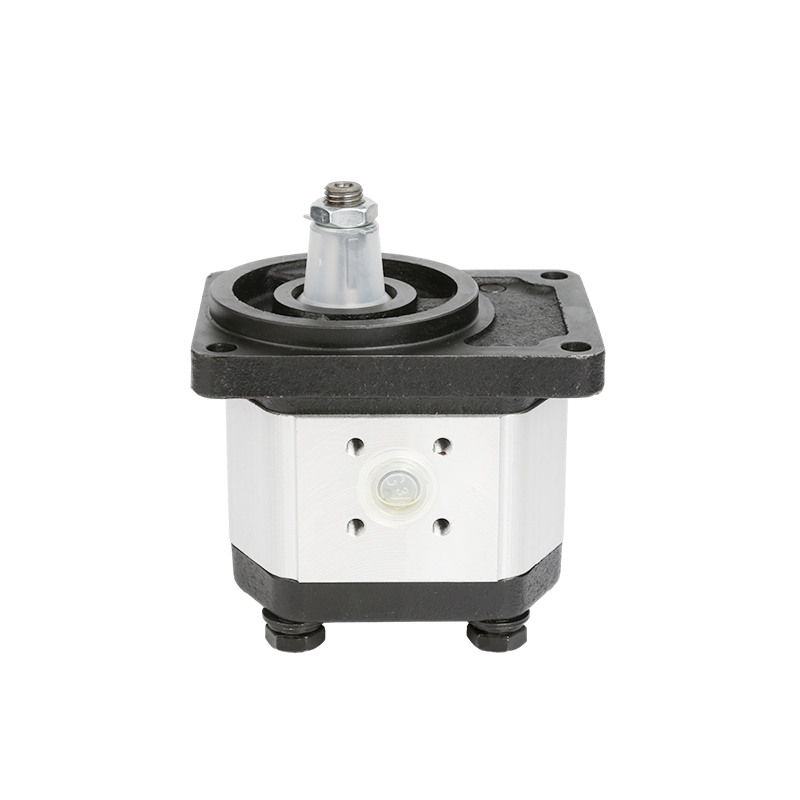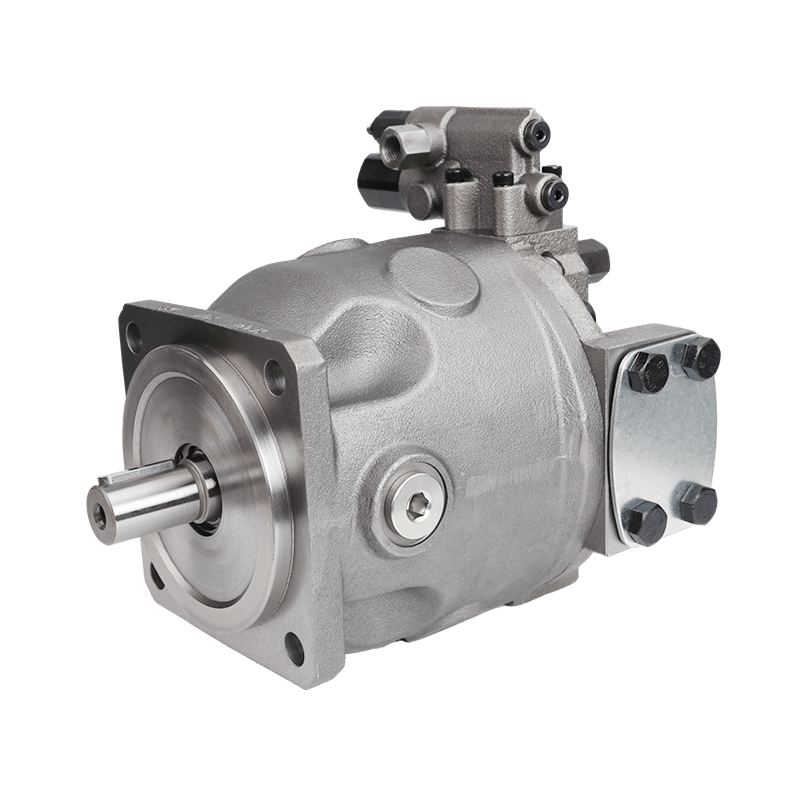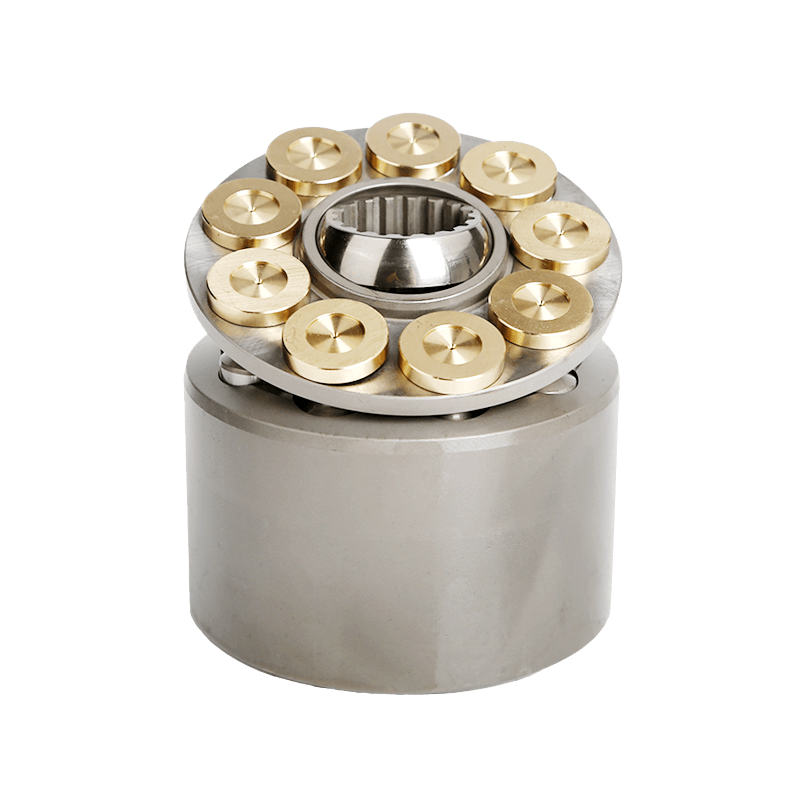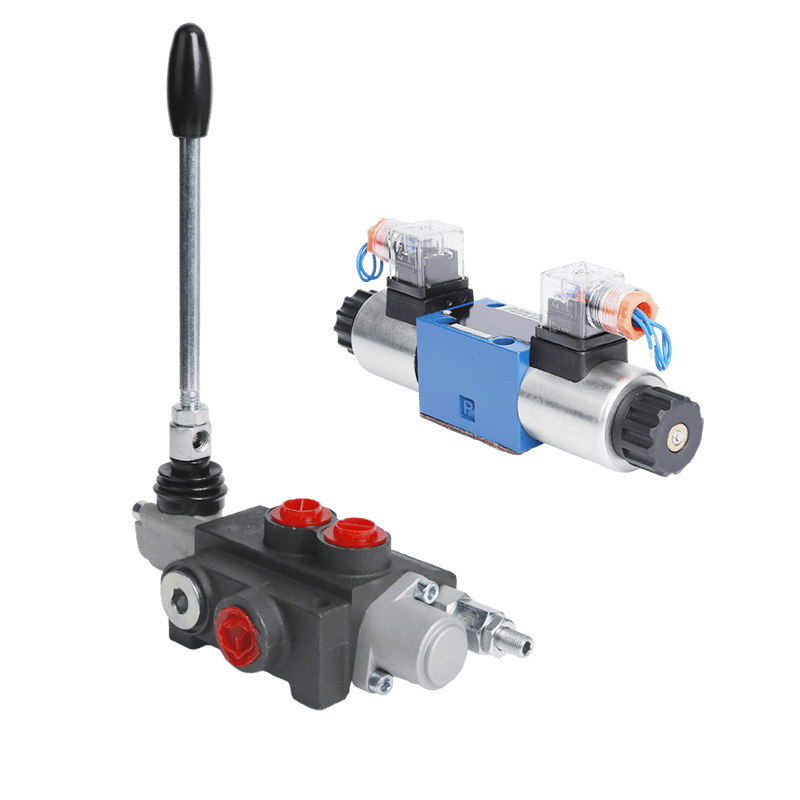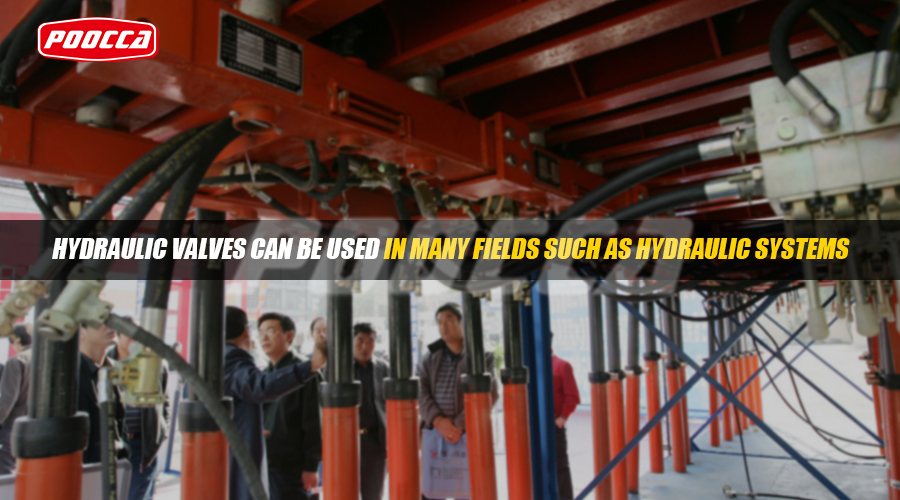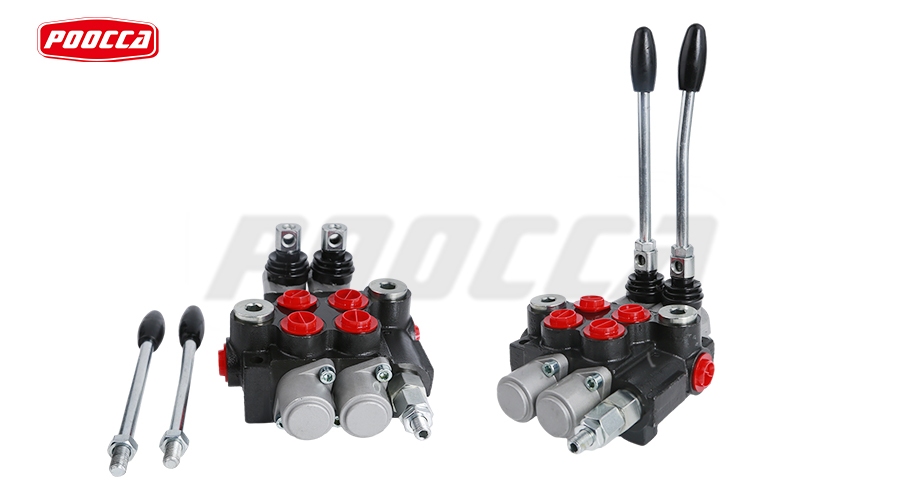Hydraulic systems are integral to various industries, powering machinery that executes vital operations in sectors such as manufacturing, construction, agriculture, and beyond. Consequently, a thorough comprehension of these systems and the components ensuring their optimal performance is essential. A key element within any hydraulic system is the hydraulic pressure relief valve. This article offers an insightful examination of hydraulic systems and underscores the crucial function of pressure relief valves within them.
Overview of Hydraulic Systems
Basics of Hydraulic Systems
Hydraulic systems operate based on the principle of using fluid under pressure to transmit power. These systems convert mechanical energy into hydraulic energy, which is then executed to complete various tasks, from lifting heavy loads to precisely controlling machinery movements. The versatility and efficiency of hydraulic systems make them invaluable assets across numerous fields.
POOCCA Hydraulic (Shenzhen) Co., Ltd. was established in 1997 and has four companies in Hong Kong, Guangdong, Jiangsu and Zhejiang. We are a comprehensive hydraulic service company specializing in the research and development, manufacturing, maintenance and sales of hydraulic pumps, motors, valves and related parts. With extensive experience in providing power transmission and drive solutions to hydraulic system users around the world, we have a strong reputation in the industry.
Components of Hydraulic Systems
To grasp the efficacy of hydraulic systems, it’s crucial to understand their core components. Each component plays a specific role, and they work synergistically to ensure the system’s smooth operation.
Pumps
Hydraulic pumps are the heart of the system. They generate the flow of fluid, which is necessary for the system to function. Pumps convert mechanical energy into hydraulic energy, which is then distributed through the system to actuate different operations. There are several types of hydraulic pumps, including gear pumps, vane pumps, and piston pumps, each suited for various applications based on the needed pressure and flow rate.
Actuators
Actuators are critical in converting hydraulic energy back into mechanical energy. They can be linear, such as hydraulic cylinders that provide straight-line motion, or rotary, like hydraulic motors that offer rotational movement. These actuators are essential for carrying out the mechanical actions required by the system, whether it’s lifting a load, moving a machine part, or performing other precise tasks.
Valves
Valves control the fluid’s flow and pressure within the hydraulic system. They regulate the direction, pressure, and volume of the hydraulic fluid, ensuring the system operates safely and efficiently. Different types of valves, such as directional valves, flow control valves, and pressure relief valves, each serve unique functions to maintain and optimize system performance.
What is a Hydraulic Pressure Relief Valve?
Definition and Purpose
A hydraulic pressure relief valve is an essential component designed to protect the hydraulic system from excessive pressure, which could cause damage or lead to a system failure. When the fluid pressure exceeds the pre-set limit, the pressure relief valve opens, allowing the excess fluid to return to the reservoir. This action prevents potential overpressure scenarios that could harm the hydraulic components or cause the system to malfunction.
Importance in Hydraulic Systems
The hydraulic pressure relief valve is a critical safety measure in any hydraulic system. Without it, the system is vulnerable to pressure spikes that can cause catastrophic failures. Overpressure can lead to burst pipes, damaged seals, and other component damage, resulting in costly repairs and downtime. By incorporating a pressure relief valve, these risks are mitigated, ensuring the system operates within safe pressure limits and extending the lifespan of the equipment.
How Does a Hydraulic Pressure Relief Valve Work?
Operational Mechanism
The operational mechanism of a hydraulic pressure relief valve is straightforward yet highly effective. The valve is set to a pre-determined pressure limit. When the system pressure exceeds this limit, the valve opens, allowing the excess fluid to bypass or return to the reservoir. Once the pressure drops back to safe levels, the valve closes, and the system resumes normal operation. This cyclic operation effectively maintains the pressure within safe and operable limits, preventing potential damage.
Types of Pressure Relief Valves
There are two primary categories of pressure relief valves used in hydraulic systems: direct-acting valves and pilot-operated valves.
Direct-Acting Valves
Direct-acting pressure relief valves are the simplest type, featuring a straightforward and compact design. When the pressure in the system exceeds the set limit, it forces the valve to open against a spring, allowing the fluid to bypass. These valves are known for their quick response and reliability in systems with lower flow rates and pressure settings. They are often used in applications where immediate pressure relief is necessary to protect sensitive components.
Pilot-Operated Valves
Pilot-operated pressure relief valves are more complex and suitable for systems requiring higher flow rates and pressure management. These valves use a secondary pilot valve to control the main relief valve. When the system pressure reaches the pilot valve’s set point, it activates the main valve to open and relieve pressure. This type of valve offers greater precision and stability in maintaining system pressure, making it ideal for larger and more complex hydraulic systems.
Benefits of Using Hydraulic Pressure Relief Valves
Safety Measures
One of the most significant benefits of employing hydraulic pressure relief valves is the enhanced safety they provide. By automatically responding to pressure spikes, these valves prevent potentially hazardous situations such as equipment bursts or fluid leaks. This safety mechanism is crucial, not only for protecting the machinery but also for ensuring the wellbeing of the operators and nearby personnel. Safety is paramount in any industrial environment, and pressure relief valves are an integral component in achieving it.
Equipment Protection
Beyond ensuring safety, hydraulic pressure relief valves play a vital role in protecting the equipment itself. Overpressure can lead to a myriad of issues, including damaged seals, warped pipes, and even catastrophic system failures. By dissipating excess pressure, these valves safeguard the system’s components, thereby extending their operational lifespan and reducing the need for frequent repairs. This protection is particularly important in demanding environments where hydraulic systems are exposed to high loads and continuous use.
System Efficiency
Efficiency in hydraulic systems is another key benefit provided by pressure relief valves. These valves ensure that the system operates within its designed pressure limits, optimizing performance and reducing energy waste. By maintaining a stable pressure level, the entire system can function more smoothly and reliably. This efficiency translates into improved productivity, reduced downtime, and lower operational costs, making pressure relief valves indispensable for cost-effective and high-performing hydraulic systems.
Common Applications in Various Industries
Manufacturing and Automation
In manufacturing and automation, hydraulic systems are ubiquitous, powering everything from assembly lines to robotic arms. Hydraulic pressure relief valves are crucial in these settings to prevent system overloads and ensure precise control. In automated processes, any deviation from the norm can result in production halts or defects. Pressure relief valves help maintain consistent performance, thereby supporting the high precision and reliability required in manufacturing operations.
Construction Machinery
Construction machinery, such as excavators, loaders, and cranes, heavily relies on hydraulic systems to perform their tasks. In these demanding applications, the risk of overpressure is high due to the rigorous conditions and variable loads. Hydraulic pressure relief valves protect these heavy machines from pressure-induced damage, ensuring they operate safely and efficiently. The robust performance of construction equipment is vital for maintaining project timelines and ensuring worker safety.
Agricultural Equipment
Agricultural machinery, including tractors, harvesters, and sprayers, also benefit from the use of hydraulic pressure relief valves. These machines often work in harsh environments and under varying loads. The pressure relief valve ensures that sudden pressure spikes do not harm the hydraulic components, preserving the equipment’s longevity and functionality. This protection is essential for farmers who rely on these machines for timely planting, cultivating, and harvesting tasks.
Maintenance and Troubleshooting Tips
Regular Inspection Practices
Maintaining the functionality of hydraulic pressure relief valves requires regular inspection practices. Routine checks should include verifying that the valves are set to the correct pressure, examining them for any signs of wear or damage, and ensuring there are no leaks. Regular maintenance can prevent unexpected failures and extend the life of the valves. It is also advisable to follow the manufacturer’s maintenance guidelines and use recommended tools and techniques for inspections.
Common Issues and Solutions
Even with regular maintenance, hydraulic pressure relief valves can encounter issues. Common problems include valve seat wear, spring fatigue, or contamination from debris in the hydraulic fluid. These issues can cause the valve to malfunction or fail to activate at the designated pressure. Solutions involve cleaning the valve, replacing worn-out components, and ensuring the hydraulic fluid is kept clean with proper filtration. Immediate attention to these issues can prevent broader system failures and reduce downtime.
Innovations and Future Trends
Advances in Valve Technology
Technological advancements are continually improving the performance and capabilities of hydraulic pressure relief valves. Modern designs incorporate materials that offer higher durability and resistance to wear and corrosion. Additionally, innovations such as adjustable pressure settings and modular designs allow for easier customization and integration into various systems. These enhancements lead to more reliable and versatile valves capable of meeting the demands of advanced hydraulic applications.
Digital Integration in Hydraulic Systems
The future of hydraulic pressure relief valves lies in digital integration and smart technologies. Digital sensors and IoT (Internet of Things) connectivity are being increasingly used to monitor and control hydraulic systems in real-time. This integration allows for predictive maintenance, where system data is analyzed to foresee potential failures before they occur. The ability to remotely monitor and adjust pressure relief valves enhances system efficiency and reliability, paving the way for more sophisticated and responsive hydraulic systems.
In conclusion, hydraulic pressure relief valves are vital components that offer numerous benefits including safety, equipment protection, and system efficiency. Their applications span various industries such as manufacturing, construction, and agriculture, where they help maintain smooth and reliable operations. With ongoing advancements in technology, these valves continue to evolve, promising even greater performance and integration capabilities in the future. Regular maintenance and understanding common issues are also key to ensuring these valves function optimally, safeguarding the longevity and efficiency of hydraulic systems.
At POOCCA, our strength is our dedicated team of over 300 professionals. Within this highly skilled workforce, we have a dynamic team of 70 sales professionals who possess vast experience and in-depth knowledge of our industry. Their expertise is crucial in providing tailor-made solutions and exceptional services to our valued clients.

